BAYEX 2025: Train How You Fight
Cal Guard’s 95th Civil Support Team trains with partner agencies in emergency response
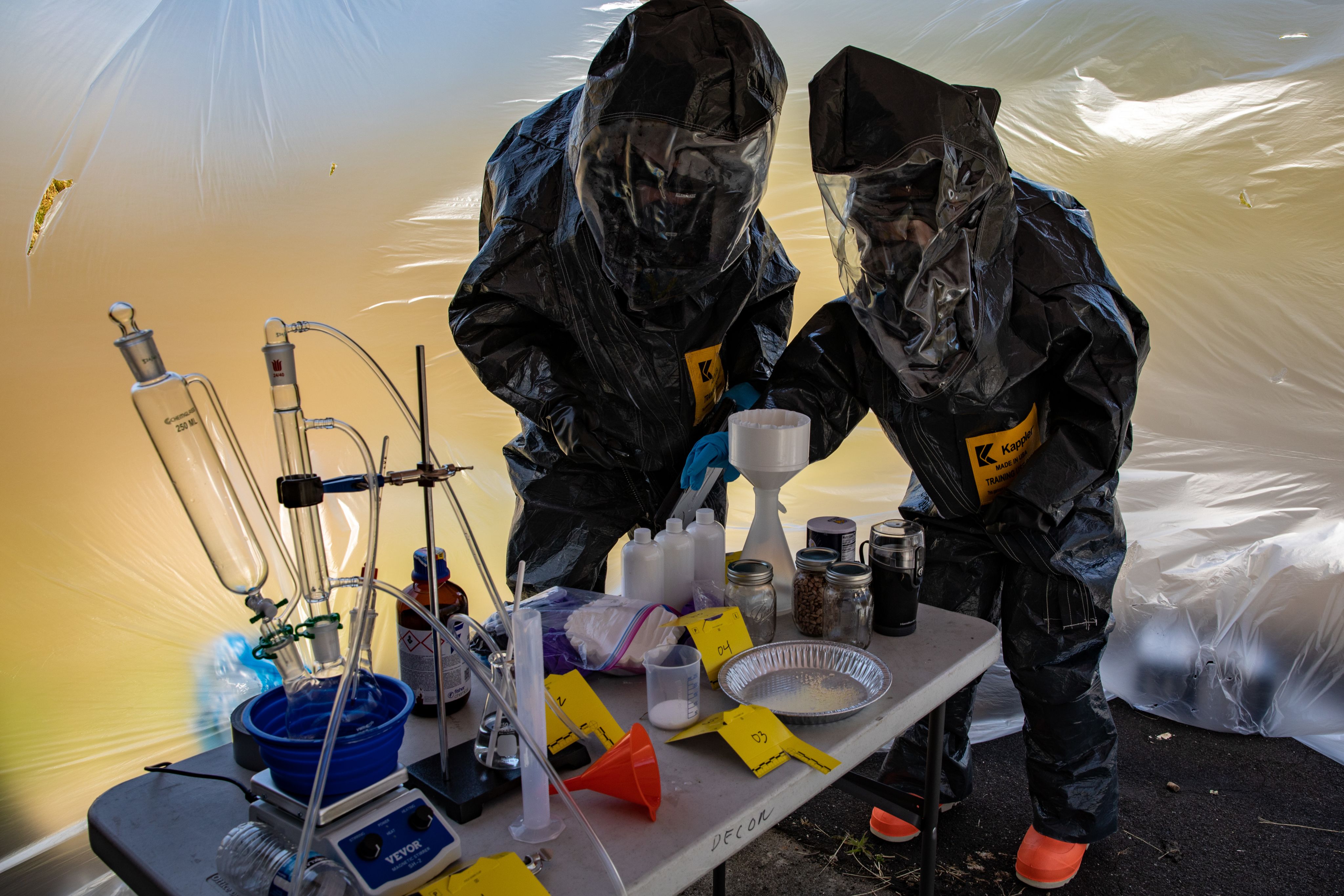

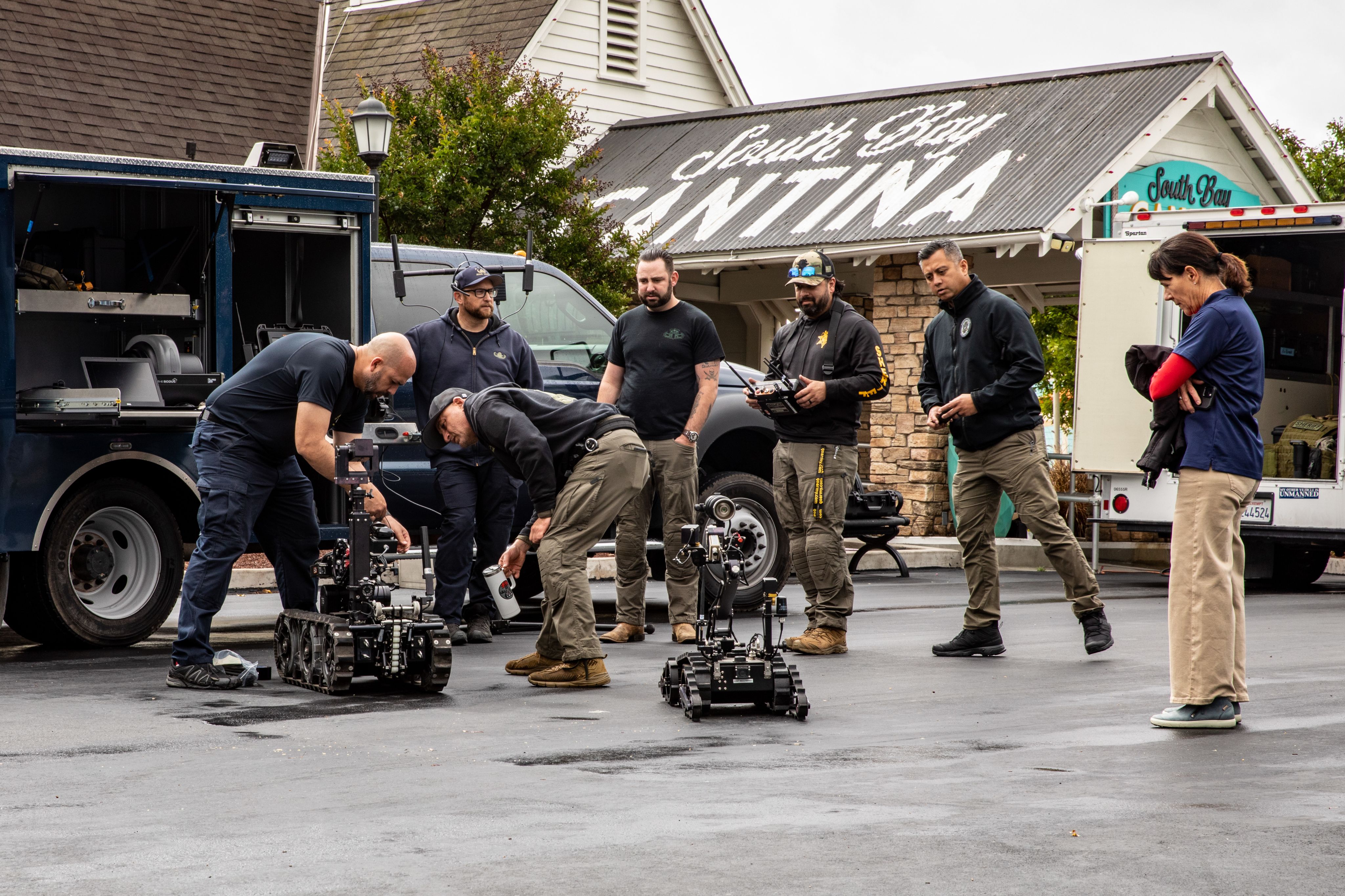
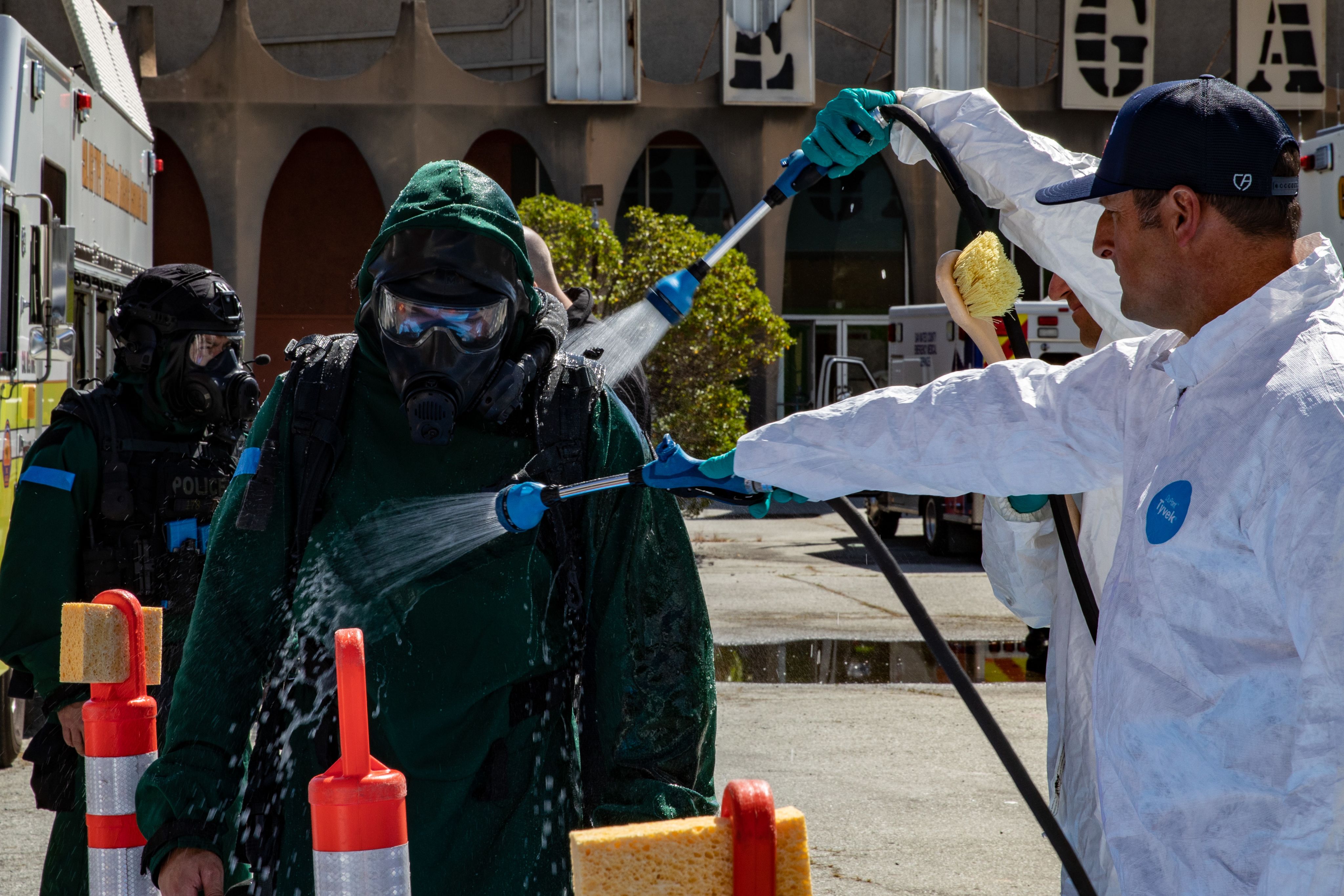
by Staff Sgt. William Griffen
California Army National Guard Public Affairs
June 25, 2025
“It was a nice sweat bath.”
That’s how U.S. Army Sgt. Darshan Manhas, a survey team member with Arizona’s 91st Weapons of Mass Destruction Civil Support Team (91st CST), described his experience with an exhausted chuckle after being free from his hot HAZMAT suit on a sunny day in Mill Valley, Calif., May 13, 2025.
The California Army National Guard’s 95th CST collaborated with over 100 different California emergency response agencies and CSTs from other states to complete the annual BAYEX at various locations in the Bay Area, Calif., May 12-16, 2025. Participants completed training at several public locations, including California’s Great America in San Mateo, Nike Missile Site SF-88L, the Water Emergency Transportation Authority’s ferry, the USS Hornet, and Fort Baker.
“The Army has this big thing that they tell you: train how you fight, so the best way to train would be to operate in a real-world scenario,” said Sgt. Kevin Watkins, a team chief with New Mexico’s 64th CST. “As we go through some of these things, the graders, the OCs, and the people who have set it up try to make it as real as possible, and that comes down to operating jointly with first responders, as we’ll actually do that in a real-world scenario.”
The 95th CST coordinated with partner agencies to make the training as real as possible by having agencies work together in public locations where they could potentially encounter Chemical, Biological, Radiological, Nuclear, Explosive (CBRNE) hazards.
“Our primary role is to support our state, local, and federal agencies in their response, specifically for CBRNE events, though we do have other capabilities to support them,” said Capt. Jonathan Crane, the survey team leader for 95th CST and exercise director for BAYEX 2025. “In these sorts of scenarios, we would be called in to assist first responders. We can help them assess the situation and provide capabilities that they may not have.”
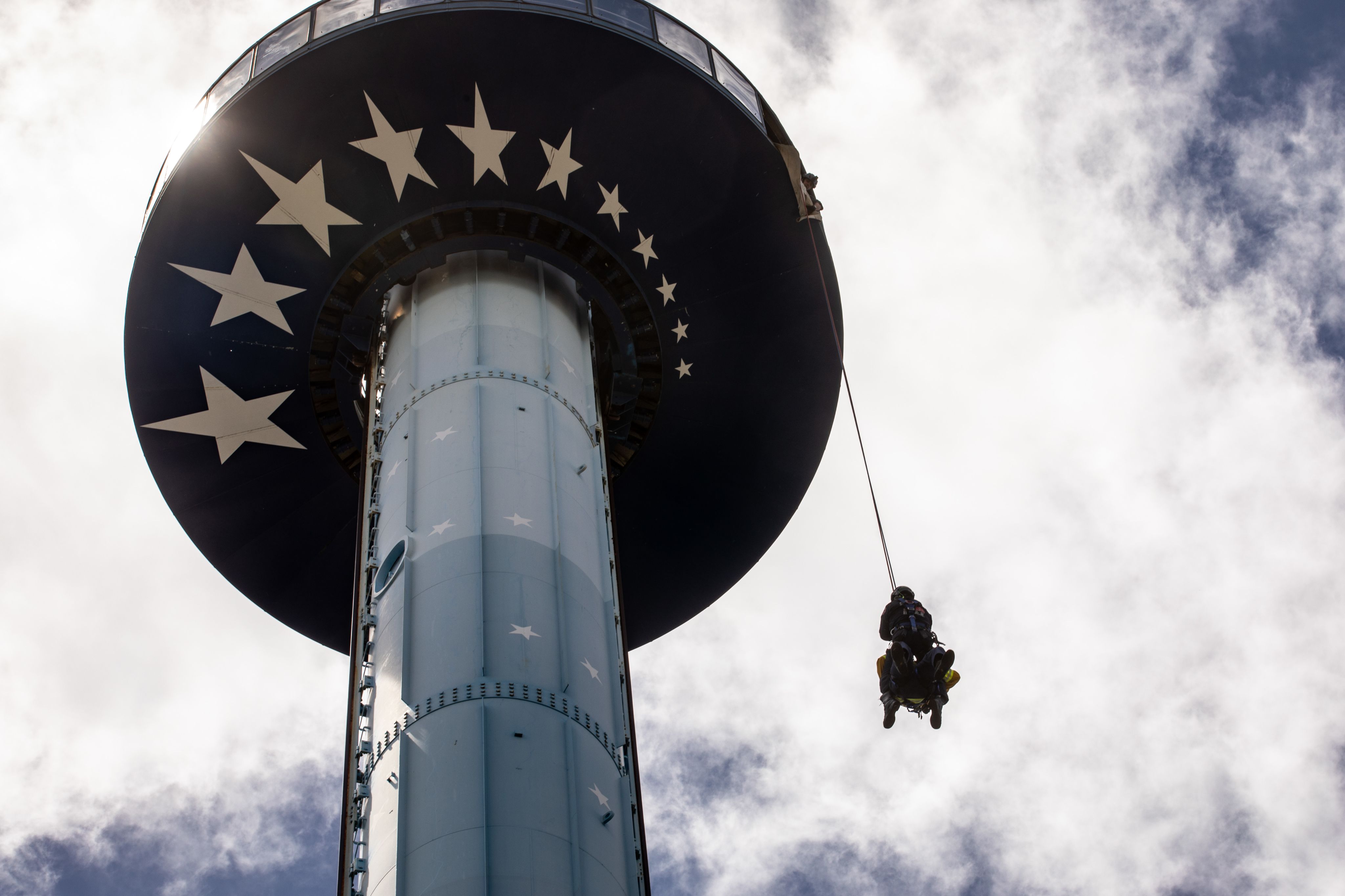

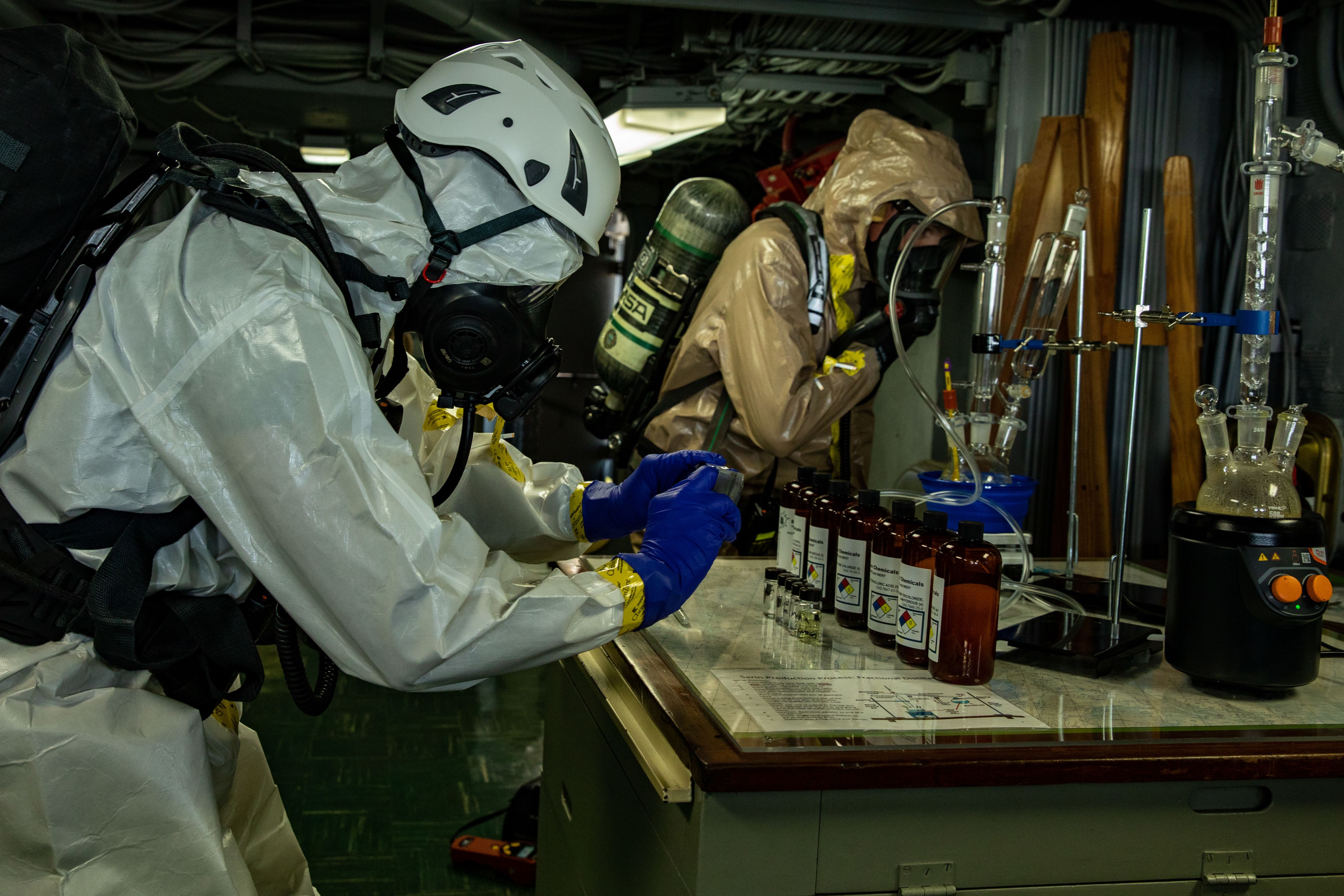
During the exercise, each agency had to confront mock incidents in an overarching scenario involving terrorism, CBRNE hazards, and civilian victims. Each situation tested how agencies would contribute and collaborate in a real incident. Some situations involved finding homemade explosives labs, testing potentially hazardous substances, apprehending a suspect, and treating civilians affected by a CBRNE hazard.
“The importance of this training is to gain confidence in your abilities and in your equipment, so that way, you know that when you come in a situation that’s seldomly used that you can rely on your other team members,” said Capt. Galvin Charekian of the San Jose Fire Department, as his fellow service members trained on rescuing a victim from a 200-foot park attraction by rappelling them down to safety.
In one scenario at California’s Great America, participants were forced to unexpectedly shift focus from analyzing hazardous substances to treating an unconscious teammate in a tight storage space in the back of a store while wearing bulky HAZMAT suits.
U.S. Army Sgt. 1st Class Norika Francismezger, a medical noncommissioned officer for 95th CST, supported a training exercise at the USS Hornet that required participants to evaluate suspicious substances on the vessel and send the information to the rest of their team. The USS Hornet challenged participants spatially due to its small, confined cabin rooms and maze-like hallways.
“Some of the biggest challenges here, especially at the Hornet, have been communication," said Francismezger, a medical noncommissioned officer for 95th CST. "The Hornet makes it really difficult for radio signals, so that’s a really good real-world challenge to work through here."
Then, at Nike Missile Site SF-88L, CST Soldiers had to move in HAZMAT suits out in the open while the sun relentlessly beamed down on them.
At Fort Baker, Soldiers had to carefully move through the old, weathered Lime Point Lighthouse, where the narrow path up to it allows you to see the rocks and waves far below.
Crane said BayEx gave everyone the perfect opportunity to build strong bonds with their partner organizations so they will be effective when working together in these types of settings.
"[Everyone's] getting some solid training in and getting to know each other so that the first time we meet each other isn’t at an actual event, but here in a training environment," said Crane.


